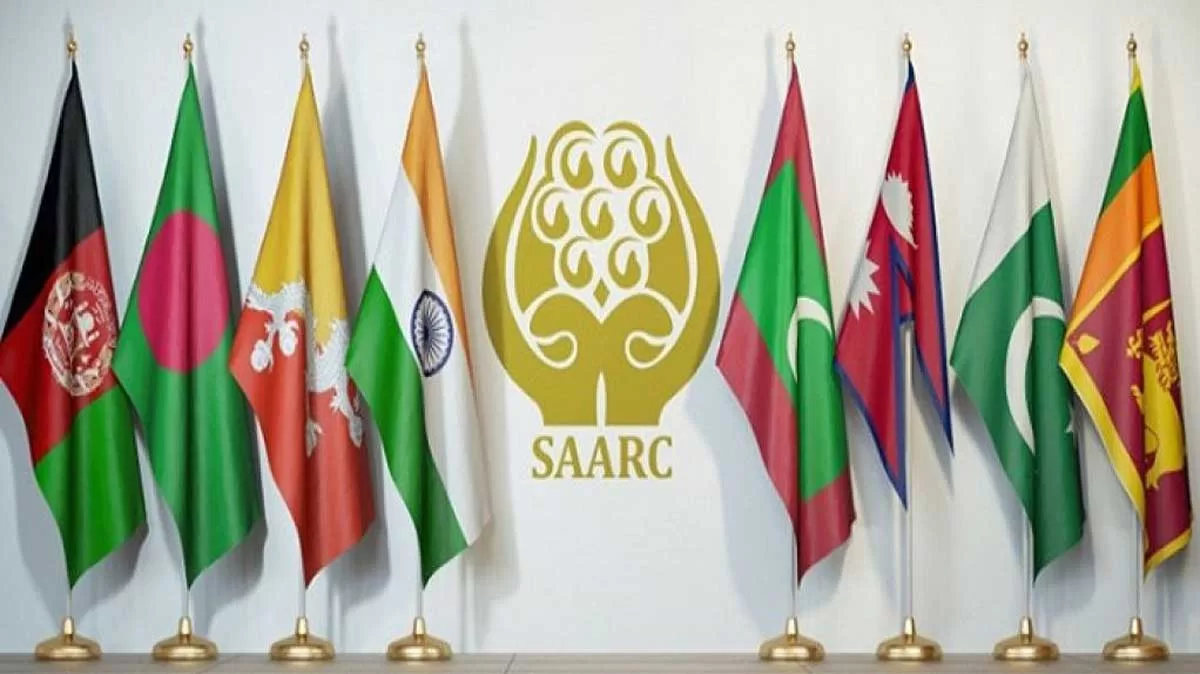The South Asian Association for Regional Cooperation (SAARC), an eco-political organization comprising eight South Asian nations, was established on Dec 8, 1985, for the friendship and cooperation among both its member states and other developing countries. This organization stands as one of the largest and most significant alliances in South Asia, covering approximately two billion people. The formation of SAARC was not a rapid process but its ideological foundations date back to 1947. The idea emerged from the Asian Relations Conference in New Delhi in 1947 convened by Jawaharlal Nehru to foster solidarity among Asian states. In addition to this, two other significant conferences contributed to the development of SAARC: the Baguio Conference in the Philippines (1950) and the Colombo Powers Conference (1954).
However, the South Asian Association for Regional Cooperation (SAARC) was founded based on several key principles aimed at maintaining stability and fostering regional cooperation. Foremost among these principles is the respect for sovereignty, territorial integrity, and political equality of nation-states. Secondly, the member states are committed to refraining from interventions in the domestic or internal matters of the other member states. Thirdly, cooperation among the member states should be driven by relative gains rather than an exclusive focus on absolute gains. Fourthly, all the decisions within this organization would be unanimous. Lastly, the countries would set their bilateral issues aside, prioritizing mutual gains. Only multilateral issues would be discussed, where every member state must agree to the decision, ensuring no member state opposes the collective decision.
In addition to this, SAARC aimed to foster economic prosperity by supporting the economic development of its member states through collaboration in trade, investment, and sustainable economic growth. One of the historic examples of this is the signing of an agreement on South Asian Free Trade (SAFTA) on January 6, 2004, in Islamabad, Pakistan. It was established to promote free trade within South Asia by reducing and eliminating tariffs and other trade barriers among SAARC countries. As a result, the world witnessed increased exports between Bangladesh and India. Similarly, SAARC’s primary objective was to empower the nations that had fallen behind or were struggling to achieve economic and social prosperity. The organization launched several initiatives aimed at promoting social welfare and improving the living standards of the people through collective efforts.
The establishment of the charter of the South Asian Development Fund (SDF) proved to be a significant step towards enhancing the social well-being of SAARC member states. SDF was dedicated to supporting development projects and initiatives focused on economic and social welfare, with the objective of uplifting the life standards of SAARC countries. In addition to this, the South Asian Food Bank was also established to address food security challenges, particularly during droughts and floods, to which South Asia remains the most vulnerable. Notably, it provided essential food assistance to Nepal when the country was severely impacted by a devastating earthquake in 2008.
Despite achieving all this, SAARC has accomplished nothing. It remained limited to drafting aims and objectives but lacked the realistic practices necessary to dominate the South Asian region. In contrast, various global alliances such as the North Atlantic Treaty Organization (NATO), European Union (EU), Shanghai Co-operation Organization (SCO), and Brazil, Russia, India, China, and South Africa (BRICS) have significantly benefitted their member-states. One of the key factors behind SAARC’s severe decline is the lack of a dispute resolution mechanism. The absence of such a mechanism widened the gap between rival countries, ultimately preventing the organization from retaining its dominance and sustaining itself over time.
Analogously, limited resources and funding hindered SAARC’s functioning, as developing and underdeveloped countries could not contribute as needed. The region of South Asia has long been plagued by extreme terrorism, insurgencies, and other security issues, obstructing SAARC’s path towards prosperity and development. Likewise, secretive and hybrid regimes within South Asia keep democracy out of the way, which gives life to the non-democratic and unaccountable functioning of the system. This non-democratic and unaccountable functioning permeated SAARC, fueling aspirations for dominance. Apart from that, inter-state further restricted SAARC’s success and hindered the growth of peace in South Asia, as evidenced by numerous instances of regional conflicts.
Geopolitical complexities between China and India became increasingly evident when China entered SAARC in 2005, and its entry was explicitly opposed by India, which saw entry as a counterbalance against its influence. Correspondingly, the rivalries between Pakistan and India were major barriers that pushed SAARC towards a declining line. Historically, both countries have been engaged in violent interactions, including the 1965 war and the Kargil war in 1999. As a result, in 2010, India refused to participate in one of the SAARC’s summits, scheduled in Pakistan, citing the aftermath of the Uri attacks in India.
India consistently accused Pakistan of promoting terrorism in the region, asserting that Pakistan must address this issue before any further agreements could proceed within SAARC. This factor played an important role in an organization’s failure. India, for further developments, repeatedly proposed a stronger anti-terrorism framework in front of SAARC countries to enhance cooperation. However, the inefficiency of both Pakistan and India could not resolve their issues that highly contributed to the failure of SAARC.
Lastly, Pakistan’s and Afghanistan’s relations have always remained unstable. The endless blame game between the two countries persistently grows. In 2007, Pakistan initially resisted Afghanistan’s inclusion in SAARC. Later in 2014, Afghanistan’s president, “Ashraf Ghani,” openly criticized Pakistan for allegedly providing safe havens to insurgents and terrorists, and this continued to expand, further deepening mutual distrust and limiting regional progress. These persistent conflicts, coupled with non-cooperation, lack of developments, limited progress, with violent bilateral interactions have rendered SAARC a toothless tiger.
